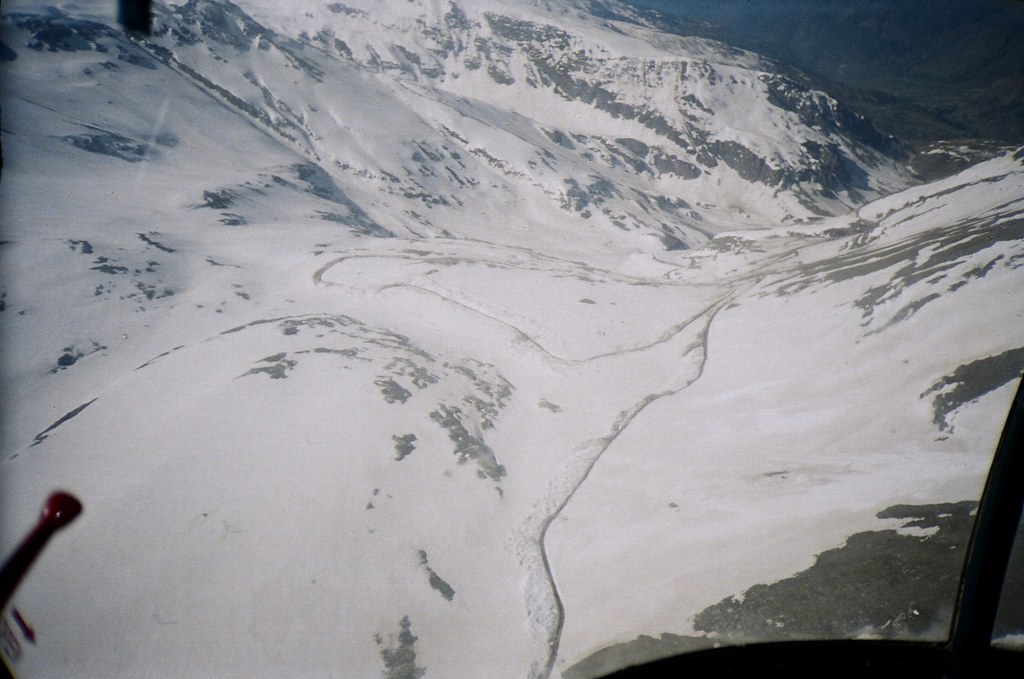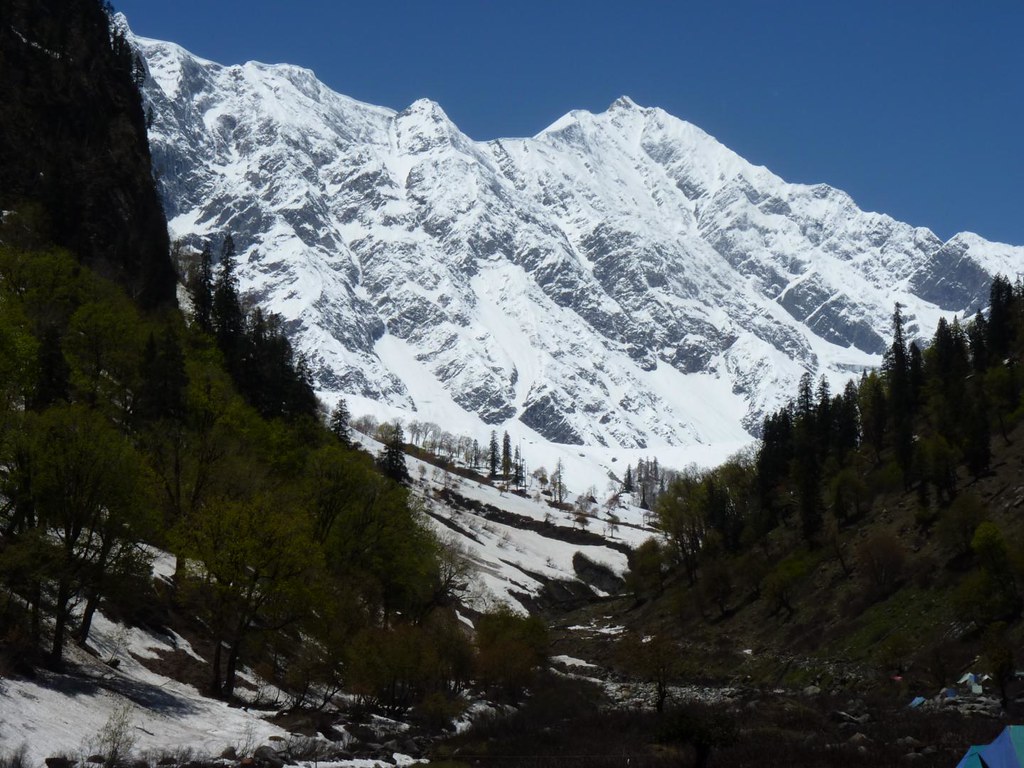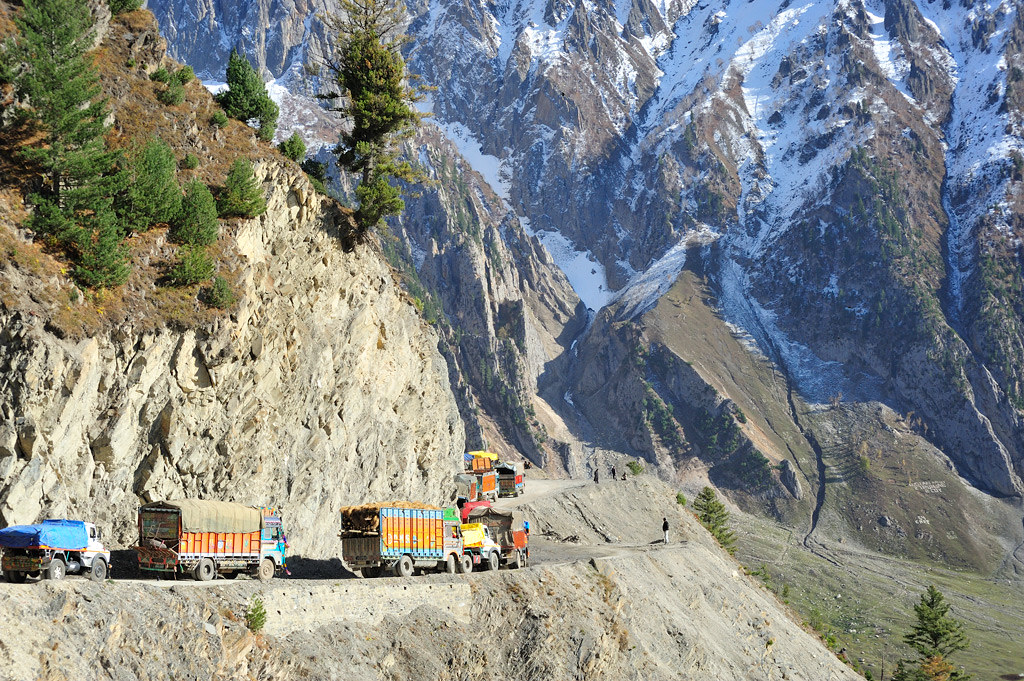http://e-info.org.tw/node/210665?utm_source=%E7%92%B0%E5%A2%83%E8%B3%87%E8%A8%8A%E9%9B%BB%E5%AD%90%E5%A0%B1&utm_campaign=65af3ddcb5-EMAIL_CAMPAIGN_2018_02_06&utm_medium=email&utm_term=0_f99f939cdc-65af3ddcb5-84956681
樹木年輪揭密 科學家發現暖化觸發更多雪崩
摘譯自2018年3月14日ENS瑞士,日內瓦報導;姜唯編譯;周念學審校
氣候變遷在山區造成的變化很多,包括冰川的退縮、雪崩頻率和強度增加。日內瓦大學(UNIGE)研究團隊發現,氣候變遷之下,山區的氣溫上升幅度高於平均,推測導致今日的雪崩更大、行進距離更遠,且每年發生的時間都比前一年要早。
在最新一期的《國家科學院院刊》,科學家採用樹木年輪學——用樹木的年輪重建過去發生的災難事件,闡明全球暖化如何觸發雪崩。
氣溫上升改變雪崩觸發機制
雪崩是一種自然現象,在山區時常發生,但是氣溫上升正在改變雪崩的觸發機制,這可能會導致山體災害,嚴重者甚至影響社會經濟發展或破壞交通基礎設施和建築物。
印度喜馬偕爾邦情況正是如此,當地住宅和旅遊業越來越密集,土地使用的壓力漸增。印度政府已經開始沿著通往列城(Leh)的路上,鑽探印度次大陸最大的隧道之一。
列城位於新德里以北500公里。隨著氣候暖化,通往隧道的道路上,雪崩危機越來越高。

樹木默默做紀錄 科學家重建雪崩歷史
因此,UNIGE研究人員在2013年至2015年到現場進行實地考察,研究地點位於海拔3000至4000米的山谷中。
他們發現,樹木默默記錄下雪崩數量的暴增。
該小組的研究目的是評估和多加了解關於雪崩的資訊,其目標有兩個:確定當前雪崩活動變化的特性,並評估未來是否需要處理這些變化。
在歐洲進行研究時,常有幾個世紀累積下的豐富資料可以運用,但在這裡,UNIGE研究人員只能將注意力集中在樹木上。他們檢查伐木後遺留下的樹樁,或是對現存樹木取芯,重建研究地點過去所發生的雪崩。
回溯1855年 喜馬拉雅山谷共38次雪崩
透過分析雪崩留在樹上的年輪和傷口,科學家得以追溯每次雪崩的時間。這項研究檢查了近150棵樹。
UNIGE環境科學研究所資深講師Juan Antonio Ballesteros-Cánovas解釋:「由於知道每棵受影響的樹的位置,我們能夠重建每次雪崩的動態、橫向範圍和行進距離。」
「此技術讓我們可以回溯到1855年,記錄下這段期間山谷中發生的38次雪崩,這是迄今在喜馬拉雅山進行的最大規模調查。」
測試氣候變遷影響的模型結合了雪崩風險和當地氣候資料,並納入早期雪崩對地形特徵的可能影響以進行調整。雪崩會摧毀植物覆蓋,因此也是一個加重風險的因素。
以前是每十年一次 如今幾乎每年一雪崩
結果很明顯。從20世紀下半葉開始,雪崩數量在頻率和強度方面都有所增加。頻率從每十年一次增加到幾乎每年一次事件。
研究人員發現,今日的雪崩更大、行進距離更遠,每年發生的時間都比前一年要早。
這些變化可能是由於氣溫上升引起的,喜馬拉雅山部分地區的氣溫上升幅度每年都在0.2至0.4度之間。
積雪結構改變 雪崩行近距離更遠
氣溫上升也影響著冰雪圈——冰川消退,永凍土融化,失去了其沈積物穩定劑的作用。
此外,氣溫升高和雨雪事件兩者共同或單獨作用,改變了積雪的結構。
現在雪季中降雪時間提早,並且在春季來臨前變得不穩定,當雪越來越厚時,雪崩的數量和強度增加。由於雪是潮濕的,雪崩速度變緩,但行進距離比過去更遠。
Climate Change Is Increasing Avalanche Risk
The impacts of climate change can be drastic in mountainous regions, where the rise in temperatures is above average, affecting both glacierized landscapes and water resources, finds a team of researchers from the University of Geneva.
These changes are varied, from retreating glaciers to an increase in the frequency and intensity of snow avalanches.
The University of Geneva, UNIGE, scientists employed dendrochronology – the reconstruction of past disasters as recorded in the growth rings of trees – to clarify the role of global warming in the triggering of avalanches.
The results of this study are published in the current issue of the journal “Proceedings of the National Academic of Sciences.”
Avalanches are a natural phenomenon and occur repeatedly in mountain areas; nonetheless, rising temperatures are altering their triggering. This can lead to disasters and serious consequences in mountain areas where they can severely affect the socio-economic development and the destruction of traffic infrastructure, and buildings.
This is the case in the Indian state of Himachal Pradesh, where increasing residential numbers and tourism are exerting pressure on land use.
Along the road to Leh, 500 km (300 miles) north of New Delhi, the Indian government has started to drill one of the largest tunnels of the Indian sub-continent.
With ongoing climate warming, the access road to the tunnel is becoming increasingly threatened by snow avalanches.
For this reason, UNIGE researchers conducted their fieldwork at the spot from 2013 to 2015, in a valley located at between 3,000 and 4,000 meters above sea level.
The researchers have found that trees are silent witnesses to the upsurge in the number of avalanches.
The aim of the research group was to evaluate and add to the information currently available about avalanches with two goals: to identify the nature of the changes in avalanche activity currently taking place; and to assess future needs for tackling these changes.
In the absence of data comparable to the information collected in European surveys, for which records often exist for the past few centuries, the UNIGE researchers focused on trees. They examined stumps when the tree had been removed or cored trees that were still standing to reconstruct past snow avalanches at the study site.
The scientists were able to date individual events by analysing the growth rings and wounds left on the trees by avalanches. The research included nearly 150 trees.
“Since we knew the position of each affected tree, we were able to reconstruct the dynamics, lateral extent and runout distance of every avalanche,” explains Juan Antonio Ballesteros-Cánovas, a senior lecturer at UNIGE’s Institute for Environmental Sciences.
“This technique meant we could go back to 1855 and record 38 avalanches over this period in the valley, the largest survey conducted to date in the Himalayas,” he said.
The models used for testing the impact of climate change combine the risks of avalanche with local climate data. They were adjusted to include the likely effect on topographical features resulting from earlier avalanches.
Since avalanches destroy the plant cover, they are an aggravating risk factor.
The results were clear. From the second half of the 20th century, there has been an increase in the number of avalanches, both in terms of frequency and intensity. The frequency has risen from one event per decade to almost one event every year.
The researchers found that today’s avalanches are bigger, travel greater distances and are triggered earlier in the year than avalanches long ago.
These changes can be attributed to rising temperatures, which have reached 0.2 to 0.4 degrees annually in some parts of the Himalayas.
Rising air temperature are also affecting the cryosphere: glaciers are receding and permafrost is melting, losing its role as a sediment stabilizer.
In addition, the structure of the snowpack is changing. It is being transformed by increasingly warmer air temperatures and/or altered by rain-on-snow events.
Snow is now also falling earlier in the season, and is being destabilized before spring, at a time when it is thicker, leading to an increase in the number and intensity of avalanches. Since the snow is wet, avalanches are descending slowly but over a greater distances than in the past.
※ 全文及圖片詳見:ENS







沒有留言:
張貼留言